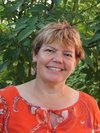Funding: Climate-KIC - Ph.D. Programme
Since 2014, the project EORAP (Earth Observation for the retrieval of agronomical parameters) focusses on the analysis of spatial crop patterns in agriculture. Heterogeneities in agricultural cultivation have temporal (nutrient supply, diseases, storm events etc.) and permanent (soil type, relief, mismanagement etc.) origins. These spatial variations can impact yield and are economically relevant to the farmer. The detection and classification of crop patterns can support the adaption of cultivation, fertilisation and treatment strategies for the crop. This optimisation of measures, which is the essence of “precision farming”, can lead to a sustainable agriculture, handling resources in a sensible manner, while remaining economically feasible.
The basis for the detection of crop patterns is a time series of RapidEye scenes, including at seven cultivation periods. The test field is near the village Görmin, within the TERENO test site “DEMMIN” in North-Eastern Germany. Fig. 1 displays the field in three different years with the crops of wheat, canola and sugar beet. Reoccurring crop patterns can be detected independently of the crop type. The goal of this project is the development of an automatic algorithm to detect these reoccurring crop patterns – solely on the basis of satellite images. Further can the fusion with additional spatial data, such as soil and nutrient maps, as well was elevation models help to gain a result indicating yield expectancy zones. The latter can be a viable basis for precision farming actions and enhance the cultivation efficiency of the farmer in consequence.
Resource-sensitive efficiency and sustainable farming is a key factor of this Climate-KIC project, which targets the development of an application destined for the ever-growing smart farming or digital farming market. Remote sensing plays a vital role in this market, especially in light of the powerful “Big Data” and “Open-Source” progress.




